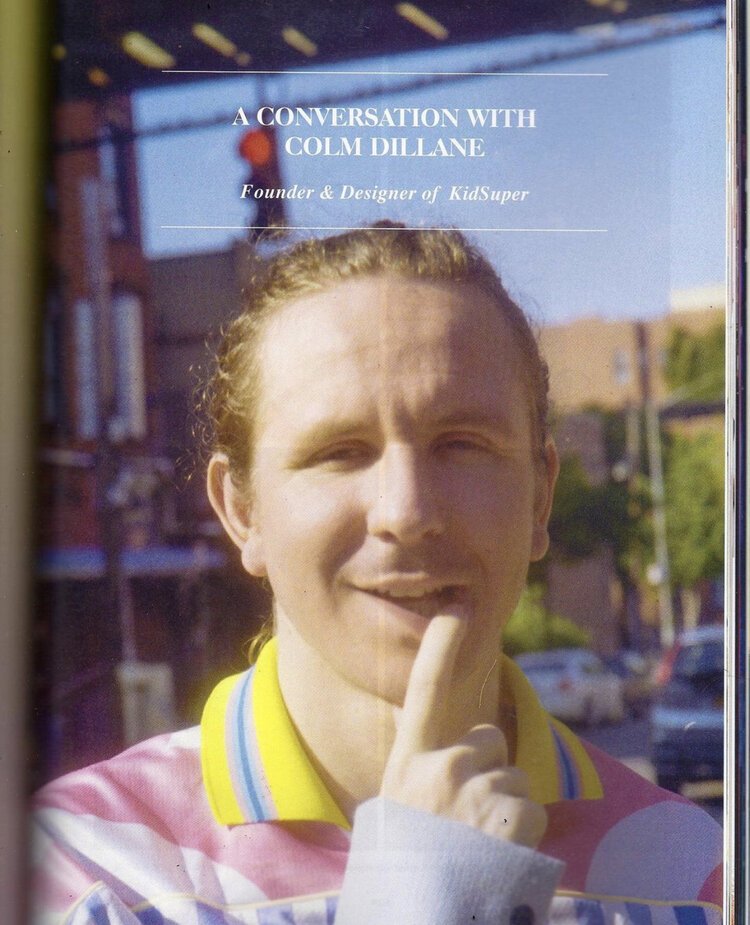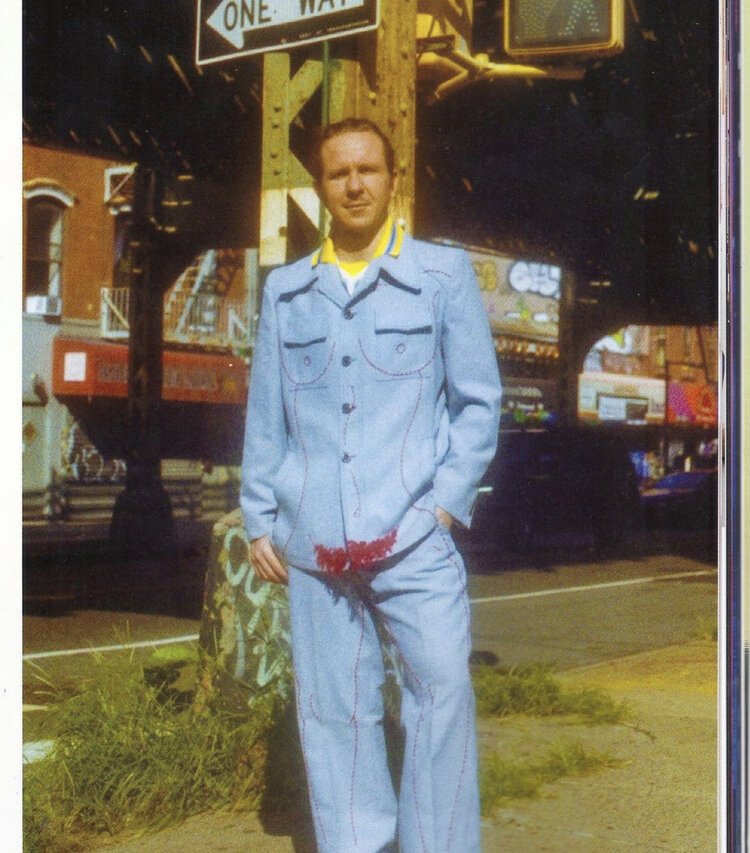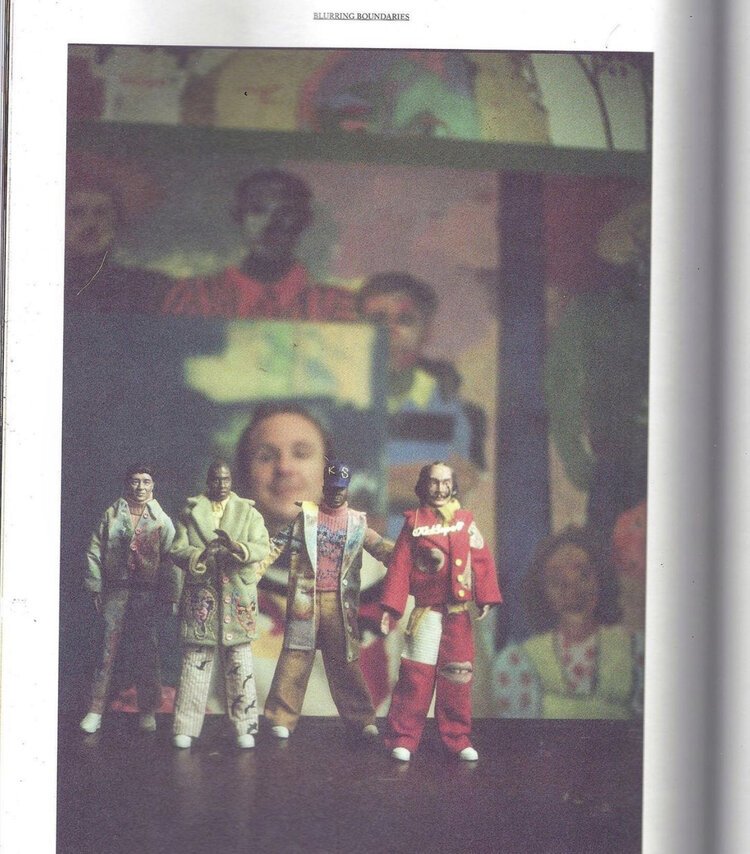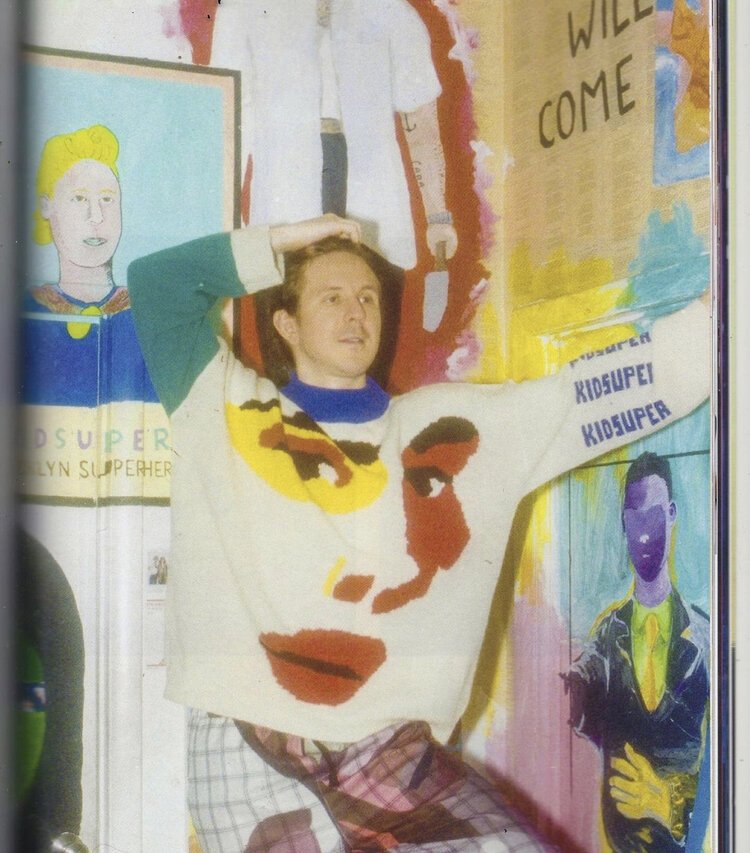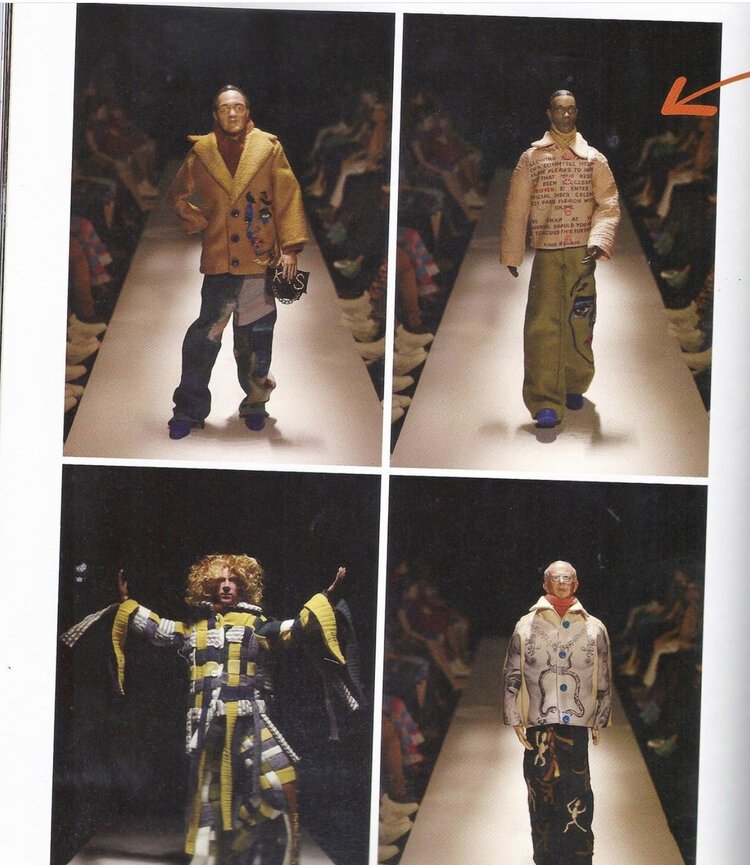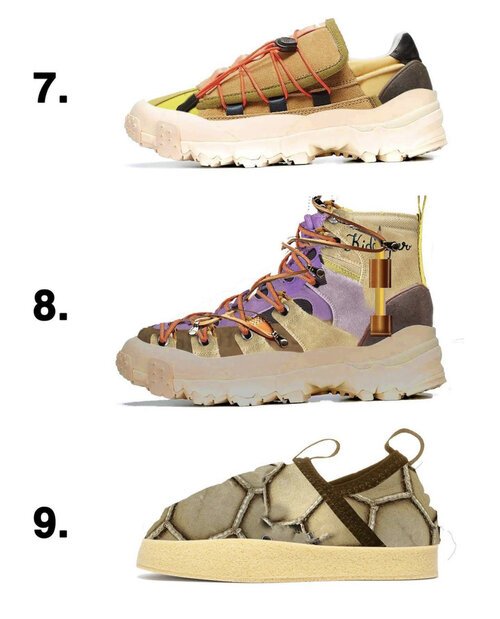Kidsuper: A Breath of Fresh Air in Fashion
words by Dave Paicu — images via @kidsuper
★
It’s difficult to summarise Colm Dillane — the creative genius behind Kidsuper — in a single sentence. Beginning his life in a remote city in Wisconsin before moving to New York City and graduating with a mathematics degree from New York University, Colm could have arguably led a life moored into one port of professionalism. With that being said, Colm is debatably the antithesis of mediocrity when it comes to his vision for what has become Kidsuper — and his eventual rise to working with brands like Puma and even creating shows for Paris Fashion Week.
Delineating himself from his contemporaries, Colm creates a presence as opposed to an aesthetic. He opts for opportunities as opposed to just a collaboration and perpetuates an aura of hard work that characterizes the upward trajectory Kidsuper has had since its conception.
With this in mind, prior to the drop of his Puma collaboration, Pure Nowhere wanted to get to know Colm, his creative mentality, and just how he managed to create one of the most unique fashion shows of all time.
How’ve you been during quarantine?
Well I thought I was going to have time to do different projects, like write a movie or read books and [Kidsuper] ended up becoming a full-on animation house. I did the stop motion fashion show and now I’m doing a cartoon with Puma — and so it actually ended up being never-ending work. I haven’t really had a day off. I think it’s cool that with Kidsuper I could base the show around anything that I wanted to do. I get inspired by anything, but a global pandemic is obviously something you can’t not get inspired by. Through that — this global pandemic — it led to a number of ideas, and for me as a brand it was kind of inspiring in a weird way.
At what point did you get into making your own clothes, and what made you want to go down that whole fashion route?
I think my entrance into the fashion world was pretty unique. I never wanted to be a fashion designer — my entry was living in New York City. Me and my friends did a lot of art projects, but I went to a predominantly maths and science based high school. So there were many pathways for design.
Since we were from New York, we heard stories about Supreme and Mishka and these brands that started there. We thought maybe we should start a T-shirt brand but the vision was ... well, there was Johnny Cupcakes. At the start it wasn’t Kidsuper — it was just me and my friends making stuff because we were counterculture [to the original] counterculture. In terms of [what], we were buying Supreme and skateboarding; we were buying some Bape and I was like almost counterculture to that since I didn’t want to spend all my childhood money, which wasn’t a lot, on clothing. So, we were like, ‘Let’s make our own.’
I always liked making things. So when I started making T-shirts, I started to realize that this was something fairly tangible that — as someone aged 15/16 — I could sell. Since the other 15 and 16-year-olds are willing to buy shirts for 15 or 20 bucks. There was a real transaction: I was thinking, ‘What else can you sell to your peers to buy when you’re that age?’ and it’s honestly not a lot, besides like marijuana, and that was just stupid to me. Once I started doing [selling shirts], I really loved having my own brand where I could constantly be working on my own projects, and it led to me meeting a lot of cool people. What was great was the doors and opportunities that were opening up.
“The more things I made, then the more things I could make.”
That’s how it constantly evolved — and how I evolved to start asking myself what I wanted to make. ‘Oh, you want to make hoodies? Then you realize you are competing on a level with other designers and that leads to you saying ok, now I’m going to make a whole collection.’
[The goal wasn’t] to be a part of Paris Fashion Week, despite the fact that that’s where I am now.
You mentioned you started off a T-shirt company and then made your way into hoodies — at what point did you decide you wanted to make your own designs and custom clothes as opposed to traditional silhouettes?
I wanted to get a little bit more creative and a little unique. One of the first hoodies I worked on, I used a blank hoodie and bought cheetah print shoelaces and I pulled out the normal shoe laces in the hoodie and replaced them. Even from a perspective of not making something completely original in the clothing, I was still trying to be unique. You can’t buy this hoodie with the new drawstrings. One of the first hats I made I put a floral brim on the bottom since I wanted it to be its own new thing.
One of the first T-shirts that really got me [recognition] was sewing Indian fabrics into normal T-shirts. I was always trying to customize. Was I trying to make dresses? No. However, I was trying to make unique clothes.
How did you then begin to work with people like Russ and members of the A$AP mob?
So, A$AP mob was from just being in New York. They were in New York, I was in New York. There’s so many members and they are very up to date and know what’s going on, so you meet them through friends or events — that’s how I met them. Russ is from Atlanta. A friend of mine saw him on Soundcloud or Bandcamp and was like, “This kid has got talent; he’s coming to New York — do you want to direct a music video for him?” I said ok, I’ll direct it. I thought, I don’t know who this kid is; he had 500 or so followers on Instagram, I liked the music, we directed the video, and we were the same age. I liked his personality and we just became friends from that. I had a recording studio in my basement and said, “Yo, if you want to stay and work out some stuff it’s cool.” Then, slowly, he grew up. People always ask me if I knew, and honestly I had no idea if he was going to blow up. I just genuinely liked him. I liked his focus and his work ethic.
With Paris Fashion Week this year, at what point did you know you wanted to be a part of it or wanted to at least make a collection for it?
It was almost a joke.
I always feel like I need to keep levelling up and do what people think is impossible. In my mind I was thinking what’s next, what’s going on? Jokingly, I thought fashion week and I could potentially do a fashion show and I know that Paris Fashion Week is the most elite and gaudy and luxurious and it seemed like it was the most unattainable.
I was like fuck it, I’m going to do Paris Fashion Week.
It was very much a little bit of a joke that everybody ended up taking very seriously. Then I had to follow through and take it incredibly seriously. I wanted to do it because it was a challenge. I saw it as “I don’t think people believe that I can do this” and what I love is that you can break into Paris Fashion Week and make people notice you if you do it incredibly well. That concept to me was awesome. I thought, “I can compete with Hermes and Dior and Louis Vuitton.” It’s not that I don’t like fashion — I mean I do and I don’t — but I’m more inspired by challenges and how I can be creative in different spaces and work ethic.
People don’t really understand what goes into creating a show for Paris Fashion Week. First you have to design the clothes and that’s difficult. Designing the clothes is the easiest part of a fashion show despite the fact that people think that it’s the hardest. After you’ve designed it you then have to manufacture all these samples. Now this is literally impossible. Hypothetically you do that in time, which is quite difficult, you then have to rent a space in a country you’re not from, in a language you aren’t fluent in. It’s also in a place where you have no connections since in New York I could call friends and be like “Hey, there’s this space, do you know if we can use it?” etc., but there’s none of that in France. Then you have to get a workspace because you need a place to work out of. Then you have to cast your models in a country you don’t understand, and I didn’t want to hire top models — not that I don’t want to, but I don’t want to — and I can’t afford anyone. Then you have to get hair and make-up, and then it all has to work perfectly for this one evening.
It’s absolutely crazy.
So many things come to a point where everything has to go correctly, otherwise you fucked up. The worst thing is that you can’t do it again, either.
KidSuper for @nowre
With your fashion, do you come up with the concept or the clothes first, and then weave them into something cohesive?
It gets created simultaneously.
You’re asking yourself, “Ok, what do I want to do with this collection? Ok, what will tell this story?” They both inspire each other. With Bull in a China Shop for example, I said we can go with the matador look; from there the matador inspires the ruffles, but then you can also look at it on the flip side it where it’s like, “maybe I want to do ruffles — do they match the matador?” It really depends. It’s very good to come up with a concept because that inspires the collection’s view so when people ask where you’re getting inspired from, I can say I’m trying to tell this specific story. If you just design a hundred amazing pieces you can hit a wall, sometimes you have to ask what can help me tell this story more clearly? That then inspires you to create the [collection].
I’m constantly inspired by the work I’m doing, just as a creative and if it’s fashion or music videos or painting or cartoon or anything it all ultimately comes full circle to work together. I find if I’m hitting a wall, I’ll do another medium and then if the clothes aren’t hitting with me then I’ll try something else, go back to the basics and then I get inspired to create something completely new.
With your latest Paris Fashion Week show you had quite a unique concept with the stop motion form of displaying your pieces. I was wondering if you were looking for any specific figures and how you managed to get Pablo Picasso to walk in your show as well?
All of those models were one barbie doll. There was only one barbie doll that could bend his hands and his elbows and knees. As a result, I had to keep buying this one barbie doll and they all had the same head. There was a limit where you could only buy three at one time which caused me to use 12 different accounts to buy them all. I then ripped off the heads and we put celebrity heads on them that we had 3D printed to perfection. After that we painted them and that’s how we got the dolls. They are all one of a kind — none of them actually exist.
“What I always love is people come from these small towns and rep them until they die, like you made it out, you’re our hero — but in New York everyone thinks they’re a superstar.”
How did you guys then end up manufacturing the clothes for the dolls?
There was one girl here that sewed every single look. Each walk was animated by an animator downstairs while we were upstairs making the clothes. We timed it so once we finished a look a walk would be finished. We then made it into a system where right when something was finished it was gone. It’s not like we had a full collection then started making the video. The video started while the collection was being made.
That’s interesting because you guys were accepted into Paris Fashion Week pretty late, did you feel like the timing constraints hindered the production?
There’s always a time constraint. If you gave me two years to make the fashion show the last few minutes are always the most important. We were supposed to hand it in three days before, but I could only hand it in seven hours before. I knew that no one else would do my concept. The cool thing is that we were competing with Dior and so forth and I feel like ours was the best one.
It’s crazy to think that my small brand in New York city was debatably the best fashion show in the world in 2020. It’s just fucking crazy to say out loud.
Your persona and brand revolve around New York, how do you feel the city has determined your creative path?
People ask me this a lot actually. […] I owe New York a huge credit. From what’s good and bad in New York since both have really inspired me. I used to live in Beloit, Wisconsin which might as well be Australia with how far removed it is from [New York’s creative mentality]. There really was no fashion. I moved from there to New York when I was 12. I was dumped into high school in New York City where you couldn’t wear the same outfit two days in a row or the same shoes. Every day was a fashion show. The cool kids had all the cool clothes. I thought, well I don’t believe in this, I’m going to start my own shit. That was the inspiration to start. We heard about other brands around us that were starting up which made the brand concept tangible which would have been much harder elsewhere.
New York is the city of inspiration because anything you want to do there is probably somewhere within four miles of you doing that at the highest level. That’s why if you are poor or rich in New York you feel like anything is possible.
There’s a lot of cool people in New York City and there’s a lot of people that come through [there]. Had I been in Wisconsin you’d never have those opportunities. On the flip side, the negative is that it’s hard to be a hometown hero as well. What I always love is people come from these small towns and rep them until they die, like you made it out, you’re our hero — but in New York everyone thinks they’re a superstar.
You’ve worked with a number of people in New York like A$AP mob and Steve Aoki but also small businesses around New York too, like the Mexican place near you, out of all these collaborations which would you say is your favourite?
This Puma one by far has been my favourite because of what they’ve allowed me to do. They are letting me make a cartoon and a cleat. They are giving me money to figure out what I want to do. They’ve agreed to build a Kidsuper soccer field. Every other collab was just me and a person, like I didn’t get many resources, but with Puma it was different. In terms of opportunities that was incredible. It was a labour of love like I worked really hard on it.
Some of these collaborations you’ll see I won’t even talk to the artist. With Ed Sheeran and Shawn Mendes, I never even met the guys. So those weren’t as cool. The Steve Aoki one was like, look I don’t care what this collaboration is, I just want to do something crazy with you and just film it for content. He said “what do you want to do?” I said “when do you have free time?” He said “I’m cliff-diving in Ibiza.” I said “I’m there.” I didn’t really care that much about the collaboration — I just wanted to cliff dive with Steve Aoki.
Every collaboration or thing I do I try to make the best out of it. It’s less about the product and more about the experience and the doors that open up.
In the collaboration with Puma you rely quite heavily on soccer as an inspiration, what’s the soccer atmosphere within New York, given that America itself isn’t that associated with soccer?
I think that the perception of America and New York are two completely different things. Nowadays people are playing soccer, four or five years ago maybe not. Now though, people are playing soccer. I think the USA in 20 to 25 years will be amazing just because we have so many people.
In New York everyone is an immigrant. From all the kids in my soccer team growing up only two were born in America. There’s Africans and Hispanics, Italians and typically those people love soccer — there’s a big community in New York City. It’s probably the most played sport there.
With the drop with Puma you are releasing the cartoon as well, in it you will be having Usain Bolt come in to do a voice over, how did that feel considering you are now working with sporting icons?
That was fucking crazy dude. When I heard I was just sprinting in circles. There’s famous people, then there’s really famous people, and then there’s Usain Bolt. He's in the top five most famous people in the world. He’s a Puma athlete and I was trying to get them to allow me to use Puma stars. I pitched Lewis Hamilton, he didn’t want to be a part of it. I thought fuck, since I’d written a whole role for him. I asked how about Usain Bolt? I said it as a joke, but then they came back and told me they’ve got a great relationship with him and that he’s a really fun guy. I was like surely not and it just ended up happening.
In your upcoming drop, what are some of your favourite pieces — ranging from the insane shoes and those blazers, what are you looking forward to?
We were just thinking it’d be cool for Puma to do something different. I think visually I was thinking about how well they would take pictures. It was just a cool statement piece that no one else has done.
The concept was that in a soccer game when professionals come out, they are wearing their suits. Then they change into the track suits and then the uniform and then they play, that was the trajectory of the ideas. We had the suit to get on the bus, then the warm up and then the final jersey. That was how we convinced Puma to do it since we pitched it as being all soccer related. Deep down the reason I wanted to do it was, visually, it’d just be cool to make a suit.
“It’s less about the product and more about the experience and the doors that open up.”
Your Puma lookbook consists of a number of photos from around New York city, including with photos of people just from the streets. How do you approach that interaction with people? How did you conclude that you wanted to take photos with people from the street?
I wanted to shoot my soccer team in their respective areas. They’re all from different parts of New York some are from Queens, other from Brooklyn and some are from the Bronx. While we were shooting all these people and my players people came up and asked what was going on. So, we asked if they wanted to be in it, and they said yeah. They looked awesome and that’s how it came to be. Everyone is a star — you just have to give them the opportunity. To get real models is stupid especially when there’s so much talent on the streets. They also have more interesting stories, styles and faces with how they hold themselves, as opposed to a mannequin of a person.
On Youtube, you have a course where you take people through your creative process and on one of your recent Instagram Lives you mentioned there might be a masterclass experience coming up. What exactly would you want to build from that?
I reckon I would love to teach some classes and also bring in my friends who are successful and knowledgeable since I think they would also give some pretty cool insights. Within the Masterclass thing there’s so many big celebrities that it doesn’t even feel tangible and real, if you talk to someone of a similar age it's more relatable.
With those simple classes I did with Jägermeister it’s sick to see how many people are interested. Having five hundred people in a Zoom class just made me think well this is pretty crazy. One of my friends who’s a graffiti artist in New York asked me and said hey can I teach a class? I thought how fucking cool that would be to get someone involved in that. You get talented people to interact and people also meet each other in the class as well. In that they can collaborate and create things.
You mentioned you started off going to a math and science high school and then you got into the fashion world. At what point did you decide to dedicate yourself solely to fashion as opposed to academics? When did you decide to take that proverbial leap of faith?
I didn’t think they were that different. I was majoring in college and have a math degree from NYU. People always think that you have to be this defined person. Like if you’re a math person there’s no way you can think outside the box or if you’re a painter there’s no way you can do math, but that’s just a stupid stereotype. It’s built on laziness.
With five-year-old kids, they are reading books and doing math and then think oh no I’m not a math person, and then the whole world just fucking agrees. The kid then decides not to do their maths and then when they turn seven they’re asked multiplications, but they can’t even add because someone said it’s ok they’re not good at math, then that progress to where you’re fifteen and obviously you’re not a fucking math person. You gave up on math when you were five.
That was never an option to me, I had to never give up and I never saw them as different, if anything I saw math as arguably the most creative subject because you’re trying to find solutions to a problem.
For me it wasn’t a conscious switch of career paths, it was that I was doing math not because I had this distinct career path in mind. I was doing math because I thought college was supposed to be difficult. Looking back would have been more beneficial if I went to a school for fashion, painting or film.
I don’t even know about the fashion thing because these students get a weird mentality. They go to these fashion schools and are told that they’re supposed to be these creative geniuses, then they leave college, and everyone wants to start their own brand now. That’s already an issue, like we don’t need more brands. They get out of college and make these avant-garde crazy clothes and they have no fan base, nobody wants to buy their clothes and they’re expecting to sell one thousand-dollar jackets, like, ok you’re a little lost. The world isn’t what it used to be. It used to be you’re super talented, you get a break and then you got money for it and you ran with it. Now people only give you money if you sell really.
Finally, what’s your ultimate goal with Kidsuper? It is quite a stereotypical question of course, seeing as you’re kind of on top of the world at the moment what else do you want to do?
That’s the thing, you think I’m on top of the world,; however, I feel like there’s so much room to grow. I would love to have little Kidsuper buildings all across the globe. That would be cool. Now, where I can do many different things, I would like to be collaborating with the greatest minds of our generation and work on really big projects. I want to make a movie and this masters class thing could be huge, I could partner with Princeton. The ideas are endless.
Within different parts of the brand from music to art, I can do whatever I like since I’ve built the foundation to build off. I just want to keep growing, but then again, growing pains are real and trusting people is hard. I need competent workers and people I want to work with. At the moment I’m just figuring things out by trying. Each day is a new day with a new opportunity and with each opportunity comes more of them, so I just want to keep pursuing that really and see what doors I can open up.


